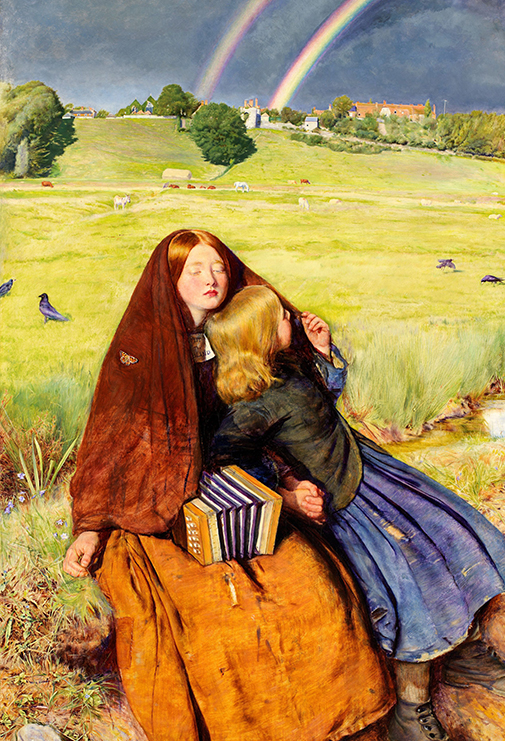- Vol. 10
- Chapter 07
Art History
This is the kind of painting I would go out of my way to avoid in a museum, without bothering to read the explanatory blurb pinned at its side. I can just hear my high school art history teacher highlight its symbolism and classic religious motifs. Madonna and Child. Golden hair and pale skin to designate innocence. Rainbows as messages from God. Maybe something about fertile agricultural fields representing fecundity. Wasn’t there something ominous about black birds? Darkly sexual in some way. I think we learned that in art history, but perhaps I am just remembering my best friend, Mona, whispering her snide remarks.
The skirts of our uniform were in the same sky blue shade as that worn by the younger girl, only we rolled the waistband over so many times, the hem barely skimmed the edges of the trendy boxer shorts we wore underneath. Mona famously wrote algebraic equations on the inside of her skirt, surreptitiously flipping it over to remind herself during maths exams. She did better at Art History, despite the snide remarks, writing her final essay about an Henri Rousseau painting that also featured a travelling musician at rest, The Sleeping Gypsy. A lion stands above the figure, possibly poised to devour her, or perhaps just nuzzling curiously.
I imagine the lion at the edge of this painting. The two girls are Mona and myself and we’d probably fight over who got to be the redhead. But there we are, in the Californian fields at the edge of our suburb, whispering our secrets or sharing our homework notes. That lion is crouching just out of view, and it’s not for another 15 years before it pounces and tears our friendship into bloody scraps.

